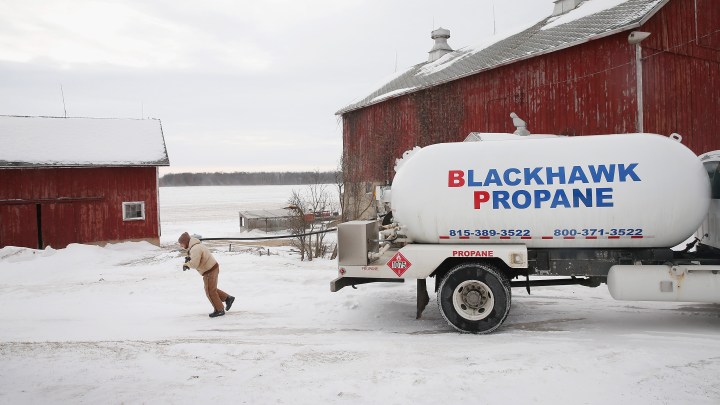
A cold winter’s coming, while heating fuel prices are at multiyear highs
A cold winter’s coming, while heating fuel prices are at multiyear highs

We are eight weeks out from winter, and indications are it’s going to be an expensive one if you live in a cold place.
The prices of natural gas, propane and heating oil are all up — at multiyear highs — and are forecasted to stay there. Meanwhile, the weather forecast is for a colder winter.
The Energy Information Administration estimates that households that have natural gas will likely spend about 30% more on heat this year than last year. And those who heat with propane or heating oil will probably see their bills go up even more.
That combination of colder temperatures and higher energy prices means a lot more people may be facing some difficult choices soon.
“They call it the heat or eat dilemma,” said Diana Hernández at Columbia University’s Mailman School of Public Health. “When winter heating costs are high, it’s also just kind of very commonplace for people to start to pull back on other consumables.”
Like food. This is known as energy insecurity, and it affects 1 in 3 U.S. households, according to Hernández.
When energy prices are high, heating bills tend to go up the most for people who live in poorly insulated, inefficient homes, said Ariel Drehobl at the American Council for an Energy-Efficient Economy.
“Low-income households and communities of color, especially Black and brown households, are much more likely to live in older buildings that are less efficient, that require more energy to keep them safely heated and cooled,” Drehobl said.
There’s a federal program, the Low Income Home Energy Assistance Program, or LIHEAP, aimed at helping people who are struggling to afford their energy bills, but Michelle Graff at Cleveland State University said it’s historically underfunded.
“And typically, they’re only able to help between 20% and 25% of the income-eligible population,” Graff said.
She’d like to see more funding for LIHEAP. But there’s a lot more to be done, Drehobl said.
“We really need to look to solutions, such as energy efficiency and weatherization, to help folks who, you know, already have high bills,” she said.
There’s a lot happening in the world. Through it all, Marketplace is here for you.
You rely on Marketplace to break down the world’s events and tell you how it affects you in a fact-based, approachable way. We rely on your financial support to keep making that possible.
Your donation today powers the independent journalism that you rely on. For just $5/month, you can help sustain Marketplace so we can keep reporting on the things that matter to you.

















